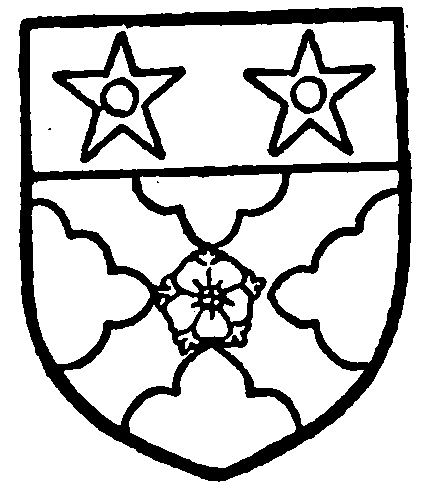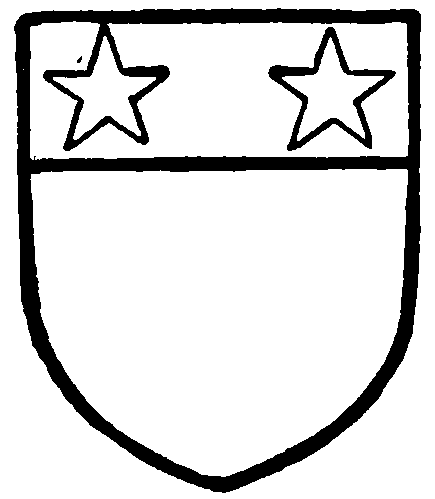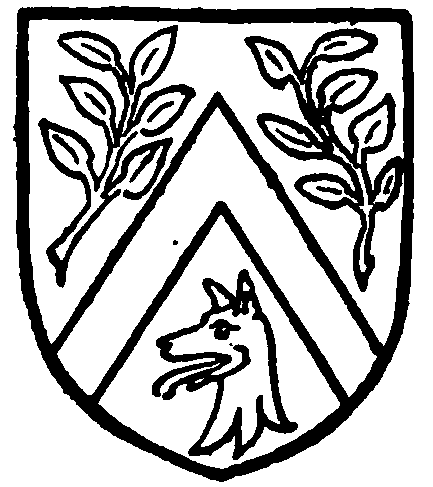Pages 443-445
A History of the County of Hampshire: Volume 4. Originally published by Victoria County History, London, 1911.
This free content was digitised by double rekeying. All rights reserved.
In this section
FARLEY CHAMBERLAYNE
Ferlege (xi cent.); Ferlega Camerarii (xii cent.); Farlig (xiii cent.); Farle Chaumberleyn (xiv cent.).
The parish of Farley Chamberlayne covers an area of 1,795 acres, including 768½ acres of arable land, 572¾ acres of permanent grass and 82¾ acres of woods and plantations. (fn. 1)
The church occupies a secluded position in the centre of the parish near the summit of a lofty range of chalk downs. On the north and west are extensive woods. A farm-house and school are the only buildings near it, but the broken ground round the churchyard shows that a settlement formerly existed here. The highest point of the downs, 563 ft. above the ordnance datum in the northern extremity of the parish, has a conspicuous obelisk, erected by Sir Paulet St. John, first baronet, to commemorate the feat of a favourite hunter which leaped into a chalk pit 25 ft. deep without injury to itself or its rider.
The tithing of Slackstead is about a mile south of the church, whence it is approached by Farley Lane. The soil is clay and loam with a subsoil of chalk, and the chief crops are wheat, barley and oats.
The following place-names occur: Rygges (xv cent.) (fn. 2); Pyncroft, Towmanstow, Whythers and Hibbis (xvi cent.). (fn. 3)
Manors
In 1086 FARLEY CHAMBERLAYNE was held by Herbert son of Remi (Remigii), and was composed of two holdings, both of which had been held of Edward the Confessor, one by Alwin and Ulwin, the other by Norman. (fn. 4) William de Ow claimed Norman's holding, probably as an appurtenance of his manor of Upper Somborne, but his claim was not allowed by the men of the hundred. (fn. 5) In 1167 Farley was in the hands of one Chamberlain, whose Christian name is not given, (fn. 6) while at the beginning of the 13th century Geoffrey Chamberlain held land in Farley of the ancient enfeoffment from Ingram de Preaux, who held in chief by the service due from half a knight's fee. (fn. 7) Geoffrey also held another tenement in Farley in serjeanty by his office of chamberlain, (fn. 8) and thus his son Robert Chamberlain was returned in the Testa de Nevill as holding land worth 40s, in Farley by the service of being chamberlain to the king. (fn. 9) However, the king gave the service by serjeanty to William de la Berton, (fn. 10) to whom Geoffrey Chamberlain had previously granted the lands in Farley, and in 1267 Robert gave up his right to William in return for a payment of 80 marks of silver. (fn. 11) The Chamberlains retained the overlordship until 1394, when the manor was held of the heirs of Richard Chamberlain. (fn. 12) It was held in 1533–4 of the king in socage as of the Duchy of Lancaster. (fn. 13)
The manor apparently remained in the Berton family for nearly a century. Thus in 1316 it was held by Nicholas de la Berton, (fn. 14) who was apparently sometimes also called Nicholas de Ocle or Oakley. (fn. 15) In 1346 John, heir of James de la Berton, granted the reversion, after the death of Mary, widow of James, who had become Mary Languish by a second marriage, (fn. 16) to Thomas Missenden. (fn. 17) Mary Languish had died before 1354, in which year Thomas Missenden, described as the king's groom, obtained a grant of free warren in Farley Chamberlayne. (fn. 18) He died about 1369, and his wife Isabel soon afterwards married Sir John Golafre, (fn. 19) who presented to the church of Farley Chamberlayne in 1378. (fn. 20) In 1394 Sir Edmund Missenden, son of Thomas and Isabel, died seised of the manor, leaving as his heir his son Bernard, who was under age, (fn. 21) and the next year the king granted the custody of the manor with the marriage of the heir to Sir Bernard Brocas, senior, and to Juliana widow of Sir Edmund. (fn. 22) Sir Bernard Brocas died in 1396, (fn. 23) and Juliana married as her second husband Sir Thomas Shelley, who held the manor in her right until he was beheaded for high treason in 1400. (fn. 24) The custody of the manor was granted successively to John Poynter, John Frome and John Boys. (fn. 25) In 1406 Bernard son and heir of Edmund Missenden came of age, (fn. 26) but apparently did not succeed at once to the manor of Farley Chamberlayne, as in 1428 John Boys was stated to be holding half a knight's fee in Farley Chamberlayne which Nicholas de Ocle formerly held. (fn. 27)

Missenden. Or a cross engrailed gules with a raven in the quarter.
Katherine Missenden, daughter and heir of Bernard, married John Iwardby son of John Iwardby of Mapledurham, (fn. 28) and was followed by her son Nicholas Iwardby, who was confirmed in the lands of his maternal ancestor Thomas Missenden in 1449–50 and died in 1462. (fn. 29) His son and heir John Iwardby granted the manor in 1475 to Roger Gery, sub-dean of the college of Wallingford (co. Berks.), (fn. 30) who in 1482 regranted it to his son John Iwardby, junior, in tail. (fn. 31) On the death of the latter in 1525 his daughter Joan St. John, widow of John St. John, inherited the manor, (fn. 32) and made a settlement of it in 1544 on herself for life with remainder to her son John St. John and his wife Elizabeth in tail male. (fn. 33) The manor thus passed into the hands of the St. John family, with whom it remained for three centuries.

Iwardby. Argent a saltire engrailed sable with a rose argent thereon and a chief sable with two pierced molets argent therein.
In 1567 John St. John dealt with the manor by recovery. (fn. 34) He was followed by his second son (fn. 35) William St. John, who continued to hold the manor until his death in 1609, (fn. 36) when it passed to his son Henry. (fn. 37) Henry died in 1621, leaving a son and heir John, (fn. 38) who came of age in 1624, but died three years later. (fn. 39) His only son, born after his death, lived only one day, dying on 25 February 1628, and the manor consequently passed to his brother Oliver St. John. (fn. 40) From that date Farley Chamberlayne followed the descent of the manor of King's Somborne (q.v.) until 1830, when it was purchased of the St. John - Mildmay family by Mr. Thomas Woodham. (fn. 41) By his will dated 1850 he left the manor to his son the Rev. T. Fielder Woodham, late rector of Farley Chamberlayne, who held it until his death in 1907. (fn. 42) In that year it passed by sale to Sir George Cooper, bart., of Hursley Park, who is the present lord of the manor.

St. John. Argent a chief gules with two molets or therein.
The New Minster at Winchester, afterwards called Hyde Abbey, was endowed at its foundation by Edward the Elder in 900–1 with SLACKSTEAD (Slastede, xiii cent.; Slakstede, xiv cent.; Slackstede, xvi cent.) among other lands. (fn. 43) The manor is not mentioned in the Domesday Survey, but continued to be held by the abbot and convent (fn. 44) until the Dissolution, when it was taken into the king's hands. (fn. 45) It was granted in 1547 to Ralph Sadler, (fn. 46) but apparently soon afterwards passed by purchase to Thomas Sternhold, groom of the Robes to Henry VIII, who composed (fn. 47) the first metrical version of the Psalms, which obtained general currency alike in England and Scotland. He died in 1549, leaving two daughters and coheirs, Judith and Philippa, (fn. 48) who joined with their husbands, Richard Pescod and William Tytherley, in conveying Slackstead to William Wright in 1573. (fn. 49) William settled the manor in 1609 on himself and his wife for life, with remainder to his son George, (fn. 50) and died in 1611, leaving a son and heir William. (fn. 51)

Cooper, baronet. Argent a cheveron gules between two laurel branches vert in the chief and a wolf's head razed gules in the foot.
Slackstead subsequently fell to the Crown, and was granted by James I in 1624 to Sir Edmund Plowden, (fn. 52) an eminent lawyer, (fn. 53) whom James I created Governor of Virginia and Earl Palatine of New Albion. He disinherited his eldest son Francis in 1646, and by his will dated 1655 left his estates in England and Virginia to his second son Thomas, (fn. 54) who succeeded him at his death in 1659. (fn. 55) James son and heir of Thomas sold Slackstead in 1705 to William Guidott, who died in 1745. (fn. 56) His widow Patience held the estate until her death in 1749, when it passed to their kinsman and heir William Woodroffe, who took the name of Guidott, (fn. 57) and dealt with the manor by recovery in 1772. (fn. 58) The later history of the manor is uncertain, but at the end of the 19th century it was in the possession of Mr. David Faber, who held it until 1903. (fn. 59) It apparently changed hands soon afterwards, passing to Sir George A. Cooper, bart., of Hursley Park, the present lord of the manor.

Plowden. Azure a fesse dancetty or with its two points ending in fleurs de lis.
Church
The church of ST. JOHN consists of chancel 24 ft. long and 15½ ft. wide, nave 41 ft. long and 17½ ft. wide, with a bell-turret of wood at the west and a south porch.
The walls are probably of 12th-century date, 2 ft. 7 in. in thickness, and the south door of the nave, c. 1160, probably gives the date of the work. No other mediaeval details remain, except the trefoiled west window, which may be of 14th-century date, all other windows being plastered round-headed openings of 18th-century date. The church was evidently 'beautified' at this period, the flat wood and plaster arch between chancel and nave being part of the work, as well as all the fittings of the nave, high deal pews, pulpit with tester, and west gallery. The altar rails belong to the same time, but the chancel seats are of later date. The roof timbers of nave and chancel are however mediaeval, of very plain character, ceiled to the underside of the braced rafters, leaving the king-posts and ties exposed. The font, which stands under the west gallery, is of baluster shape with a very small bowl, and is in part of 18th-century work. The south doorway has a plain round head with shallow chamfered abaci, and a label moulded with a roll and hollow, of a type occurring at Romsey; it ends in large beasts' heads, placed horizontally at each end holding the label in their teeth. The porch is probably of 18th-century construction. In the chancel are a number of monuments of the St. John family, the most important being that of William St. John, 1609. It consists of a panelled altar tomb on which an effigy rests, above which is a canopy supported by three Ionic columns, and surmounted by heraldry. On the front of the tomb are four shaped shields, now blank, in panels, with guilloche borders of delicate work in low relief, and the whole monument is covered with small detail of the same character. The effigy, a rather stiff piece of work, is bare-headed, wearing a small ruff above a plate gorget, articulated shoulder pieces and complete body armour of a plain design. The hands are bare and have frilled cuffs at the wrists. Long hose with tassels strapped over them reach as far as the knee pieces; and leg pieces and round-toed plate sollerets complete the defences. A short sword hangs at the left side. The original decoration and inscription were painted, and have nearly disappeared; the existing inscription being a modern transcript of the old, cut on one of the panels at the back of the tomb. The original inscription is, however, still partly legible, but has had another painted over it. The arms over the tomb are St. John differenced with a crescent, quartering: 2, a fesse between six martlets, with a molet for difference; 3, a cross engrailed, and in chief two molets; and 4, three lions passant, impaling a cheveron between three bulls' heads, with a crescent for difference. On the east wall is a mural monument to John St. John, son of Henry St. John, who died in 1627, aged twentyfour, his wife Susan, daughter of Sir Richard Gifforde, who died the next year, aged twenty-three, and their infant son John, who died a few months before his mother. Below the inscription are the kneeling figures of husband and wife with the cradled infant between them. Above a shield bears St. John impaling Argent ten roundels gules for Gifforde. On the chancel floor are several 17th-century gravestones of the St. John family, two having inscriptions on white marble borders.
There are three bells, the treble a late 15th-century bell by William Hasylwood with his initials and the inscription ' Sancte Rafael ora pro nobis'; the second an earlier bell, inscribed ' In honore Tri (nitatis)' in Gothic capitals below a line of cresting, and the tenor by A. W., 1603, inscribed 'In God is my hope.'
The plate consists of a silver chalice of 1636 and undated paten inscribed ' Ex dono Robert (sic) London Armigeri.'
The registers are in three books, the first containing baptisms from 1593 to 1764, burials from 1612 to 1737, and marriages from 1645 to 1762; the second containing baptisms from 1700 to 1812 and burials from 1766 to 1813; the third containing marriages from 1765 to 1813.
Advowson
The living of Farley Chamberlayne is a rectory of the net yearly value of £240. The advowson has always belonged to the lord of the manor. (fn. 60)
Charities
Mary St. John by will, dated 25 September 1801, proved in the P.C.C. 5 January 1803, bequeathed (after the death of her servant) 100 guineas to the clergyman of this parish for the benefit of the poor, the interest to be laid out every Christmas in whatever way he should think most for their advantage.
The trust fund, with accumulations, consists of £151 5s. 2d. consols, standing in the name of the rector, producing yearly £3 15s. 6d., which, in 1906, was divided between eight recipients, as a supplement to their subscriptions to the clothing club.


